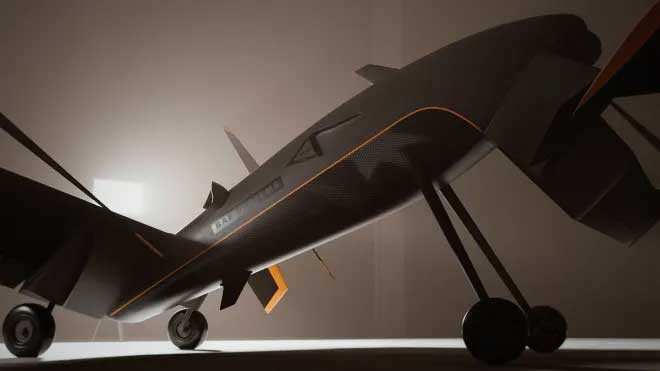GIZMODO AU
This Weird Australian Drone Is a Tailsitter Biplane That Can Launch From a Helipad
Kelsey D. Atherton - Published 5 days ago: March 21, 2023 at 3:00 pm
“The platform ideally will be operated as a predominantly autonomous system most of the time. Take-off and landing and the transition from vertical to horizontal flight will be fully autonomous,” said Mic Crump, principal technologist for autonomy for BAE Systems Australia. “Autonomous technologies aren’t intended to replace the human in the modern battlefield, but rather to augment them.”
To make the STRIX useful to the humans commanding it, it is designed to have a range of nearly 805 km while carrying 159 kg of payload. This can include sensors and communications relays, as well as bombs or missiles. With a human operator remotely guiding the drone, autonomous systems can handle the basics of flight while a human controller would be expected to make the important decisions. The airframe of the STRIX is designed to fit into a shipping container, and launch upon assembly once wheeled out.
One reason Australia and the United States are so interested in planes that can launch without runways is the expectation that, should war be fought in the Pacific and against China, such runways will be hard to maintain and secure. (This war planning often, though not always, focuses on the operational problems of supply and repair, without spending too much time factoring the risk of nuclear exchange cutting short such a war with apocalyptic fury). In order for a campaign to work from the island chains of the Pacific and any land beyond that, being able to operate armed drones from cleared fields and helipads expands how the war can be effectively fought, instead of relying on paved and reinforced 1,829 m stretches of runway.
For now, STRIX is a concept, though a prototype is in development, and BAE claims the drone could be ready to enter service as soon as 2026.
This Weird Australian Drone Is a Tailsitter Biplane That Can Launch From a Helipad
Kelsey D. Atherton - Published 5 days ago: March 21, 2023 at 3:00 pm
“The platform ideally will be operated as a predominantly autonomous system most of the time. Take-off and landing and the transition from vertical to horizontal flight will be fully autonomous,” said Mic Crump, principal technologist for autonomy for BAE Systems Australia. “Autonomous technologies aren’t intended to replace the human in the modern battlefield, but rather to augment them.”
To make the STRIX useful to the humans commanding it, it is designed to have a range of nearly 805 km while carrying 159 kg of payload. This can include sensors and communications relays, as well as bombs or missiles. With a human operator remotely guiding the drone, autonomous systems can handle the basics of flight while a human controller would be expected to make the important decisions. The airframe of the STRIX is designed to fit into a shipping container, and launch upon assembly once wheeled out.
One reason Australia and the United States are so interested in planes that can launch without runways is the expectation that, should war be fought in the Pacific and against China, such runways will be hard to maintain and secure. (This war planning often, though not always, focuses on the operational problems of supply and repair, without spending too much time factoring the risk of nuclear exchange cutting short such a war with apocalyptic fury). In order for a campaign to work from the island chains of the Pacific and any land beyond that, being able to operate armed drones from cleared fields and helipads expands how the war can be effectively fought, instead of relying on paved and reinforced 1,829 m stretches of runway.
For now, STRIX is a concept, though a prototype is in development, and BAE claims the drone could be ready to enter service as soon as 2026.
1 yr. ago


